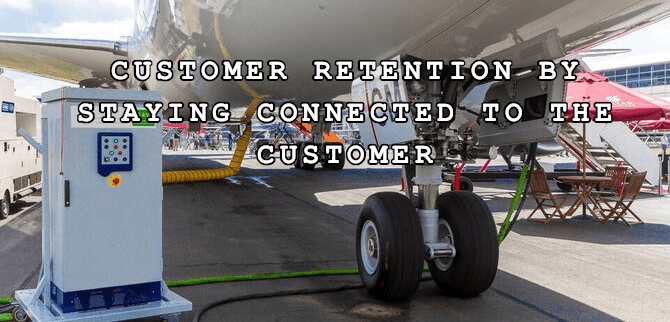
30 Sep Customer Retention by Staying Connected to the Customer
Years ago, when I was a product manager, my absolute favorite part of my job was to visit customers. Watching how they used our products in vitro, discussing my customers’ needs, listening to their suggestions and better understanding their business was ground zero. Primary data. Truth. And fundamental to all the drivers of revenue growth: customer expansion, market share expansion, market expansion, product expansion and pricing optimization. Here I’ll speak to the most basic and sometimes overlooked source of growth: retaining the customers you have… but with an AI twist.
I used to carve out around two weeks a quarter to visit customers and even then, since I was on the road covering a lot of distance and taking care of other business, I could visit maybe 8 customers per trip and that was with the help of sales doing the heavy lifting of scheduling the visits.
Until recently after a physical product, part or component was sold the OEM lost direct contact with the customer.
Today digitally-native companies naturally program this into their software and wow, it’s a firehose of valuable information compared to the trickle of my younger efforts. Whether it’s Netflix or AutoCAD or Amazon, online products track what the customer is doing, how they are doing it and how they make money doing it. Feeding this data into AI models churns out a 24-hour-a-day, 7-days-a-week stream of valuable information without ever having to get on a plane or a zoom.
Until recently this window into the customer’s world was shut to physical products used in the physical world. Until recently after a physical product was sold, the OEM lost direct contact with the customer. Or whatever customer relationship there was, was indirect, passing through people at each level of the sales channel, resulting in data quality that can be best described by the output of the game, telephone.
CUSTOMER RETENTION
As we all know, it’s far more profitable to keep a customer than to acquire a new one, whether that’s to sell them more of the same or new products or services. The absence of a direct relationship results in a loss of customer control and often, the loss of the customer without ever knowing why.
Today selling a physical product doesn’t have to mean the end of the customer relationship. Smart products are connected to the internet, and just like software, they can forever connect you to your customer… if you provide them something of value in return. The bandwidth and fidelity of the connection varies. If the product is a place, equipment, a machine or a vehicle like a Tesla, the relationship can be as intimate as any steaming service, design software or ecommerce site. If it’s something simple like a part, it may only communicate where it is or if it’s being used. No matter where on the communication spectrum, a direct customer relationship can be established by a smart product, and that relationship can be cultivated to maintain contact, provide the customer value and in turn, improve retention rate. Or heck, like Tesla, it could be used to change the business model and disintermediate that indirect channel altogether.
Smart products are connected to the internet and just like software, they can forever connect you to your customer… if you provide them something of value in return.
Proprietary customer data is power. Power that can be used to retain customers, grow revenue and change monetization by following the same playbooks used by tech’s most valuable companies.
HOW IT’S DONE
Key to getting to know your customer and what they want is the digital twin. The digital twin consists of specific data science value models chosen based on the value creation objectives. For customer retention the two most powerful sims are utility models (what a product is used for) and usability models (how a product is used) that are fed by data originating from an antenna and carried on the internet of things.
Contact us if you’d like to understand more or click calendar to schedule a free 30-minute consultation if you have a company to improve.






